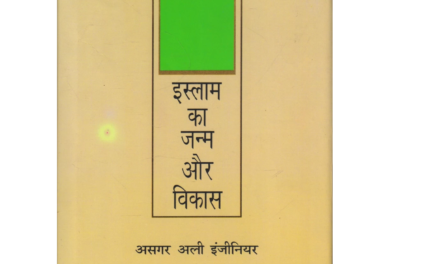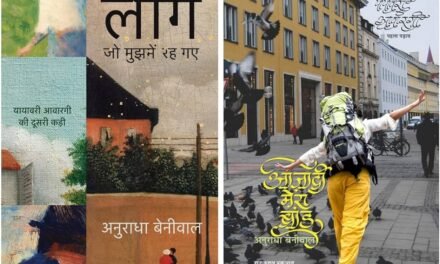Book Review by Dr. Ausaf Ahmad
Social stratification of Indian Muslims along caste lines, is by now no secret. It is well known and recognized. It is true that Islam as a religion and a social philosophy does not recognize caste distinctions ( compared to some other Asian religions where caste is integral to their philosophical outlook), but,Muslims are not a socially homogenous group in any part of the world. However, the perception that Islam gives birth to a sociologically monolithic ideological group remained a hindrance in correct understanding of Muslim societies for a long time although many Muslim groups in India belonging to lower stratum of Muslim societies such as Momin Ansar and Jameeat Raeen etc. had organized themselves, at least politically. Now, even lesser known Biradaries such as Salmani Biradari, Idrisi biradari etc have organized themselves.
Although, elite Muslim leadership have always claimed that Muslims in India are a homogenous cultural group and thus, worthy of a separate political deal, existence of different social and cultural groups amongst Indian Muslims has always been recognized at the cultural and literary levels. Famous Satirical Urdu Poet, Akbbar Allahabadi used to denote common Muslims by the names like Budhdhoo, Jumman, Shabrati, Ramzani etc. In contrast, the persons of high caste were referred to with the names of Sayyed, Mirza, etc.
Mirza ghareeb chup hain in ki kitab raddi
Budhdhoo akad rahe hain Sahab ne yeh kaha hai.
[Translation: Mirza (a high caste Muslim) is depressed as his book has been discarded. Budhdhu takes pride in the sayings of English man.[
or
Council mein bahut se saiyyed, masjid mein faqat Jumman
[Translation: There are many a high caste people in the council, but in the mosque, there is only one , Jumman, (a low caste Muslim).
The book under review , Basic Problems of OBC and Dalit Muslims is a collection of essays on various dimensions of OBC and Dalit Muslim problem edited by Mr. Ashfaq Husain Ansari who has been a member of Indian Parliament, (seventh Lok Sabha), and President of Backward Muslims of India and First U.P. State Backward Classes Commission. Mr. Ansari is a social activist for the cause of Backward Muslims but with a difference. He is an activist with an intellectual bent, deeply interested in theoretical positions and analytical results. This book can be presented as a proof in support of this claim.
This collection of essays has been divided into three parts: Part I contains 18 contributions from different authors, activists, journalists and chroniclers etc. Part II contains seven essays written by the editor himself, while Part III is a reproduction of a “thin volume” published earlier by the editor. This part also contains nine different contributions on different aspects of the issue at hand. Naturally, the first part constitutes the core of the book. It contains contributions from Imtiaz Ahmad, Madhu Limay, Nadeem Hasnain, Praful Bidwai, Swami Agnivesh and Walson Thampa, D. Raja, Ashok Yadav, Udit Raj, Dilip Karanth, Shamsul Islam, Sayyid Hamid, Sharad Yadav, Iqbal Ansari, Anwar Ali and the editor himself. This is quiet a heterogeneous list and any volume which contains contributions from all these people is also bound to be heterogeneous. It contains analytical pieces from scholars like Imtiaz Ahmad and Nadeem Hasnain. These contributions are more analytical.
Written in a scholarly manner, they fulfill all technical requirements of academic writings. These things may not be noticeable in the contributions of a more journalistic nature. Some of these journalistic contributions have been collected from different news magazines and newspapers. Generally speaking, journalistic writings are more dated than the academic writings as they are responses to specific socio-political and historical stimuli. Hence, the editor would have done better if he had also given the date of publication of the contribution. This would have helped the reader to anticipate the circumstances which would have warranted this response. This would have made the collection more useful.
It is usually agreed that Islam has no place for caste based distinctions. There is no superiority of one adherent over the other except by the way of piety. The Prophet (pbuh) is reported to have declared in his last sermon, “The whites have no superiority over the Blacks nor the Blacks have any superiority over the whites except by piety.” Similarly the Almighty God declares in the Holy Quran, “ [42 : 13] . Caste system was a unique Indian institution, which is not found in other social systems. However, notwithstanding with the normative reality, the caste system penetrated to Muslim society as soon as it arrived in India. The Arab society where Islam appeared and flourished was a tribal society. The tribal culture contains more equality and various forms of communal ownership. In contrast, India was an agricultural and feudal society.
The idea of high and low was not unfamiliar to incoming Muslims armies who used to consider themselves superior to indigenous converted Muslims. Some writers conjecture that it may be the beginning of a caste system. That is why they classify Indian Muslim population into indigenous and non- indigenous. Another point of interest may be to investigate whether caste system is as much hierarchal amongst the Indian Muslims as it is amongst the Hindus. Imtiaz Ahmad, famous sociologist thinks that there is not much of a difference as both societies have evolved caste pattern that are very similar to each other. Main features of caste system are very common between Hindus and Muslims. The caste factors are quiet prominent in selection of profession and in deciding the marital bonds in both societies. To this reviewer, the Muslim society exhibits only this much difference that there is no caste consideration in Muslim place of worship while caste has penetrated the Hindu place of worship also.
With the emergence of era of Mandal and kamandal, the caste discussions have become the prime topic of social, legal and economic discussions in the country. Foremost among these discussion is a demand for reservation in educational institutions and in jobs. At the time of adoption of a new constitution for Independent India, a scheme of reservation was adopted for selected castes and tribes mentioned in a schedule of the constitutions and hence called, Scheduled Caste and Schedule Tribes. The present schemes of reservations are enforceable only to those scheduled caste and tribes which are within the general framework of Hindu Society . Later, the gamut of Hindu society was expanded to include those who have converted to Sikhism or Budhism. However, if a member of scheduled castes converts now or has converted in past to Islam or Christianity, he loses all benefits receivable to him as a member of a scheduled caste. In other words, those backward castes which belong to Muslim or Christian religions are not entitled to these benefits. There are many essays in this book from different spectrums of political thought which shed light on various aspects of the issue.
In short, this is a good collection, which shall be useful to both the lay man and serious students of the issue, who wish to make themselves familiar with the issue of problems of backward classes of India and Dalit Muslims. Serials have done a good job in the production of this book.
(This article first appeared on 30 April 2009 on Indian Dalit Muslim’s Voice blog https://dalitmuslims.wordpress.com/)





